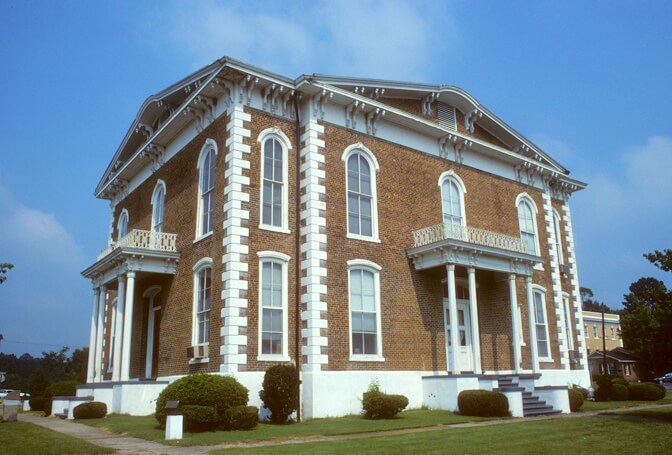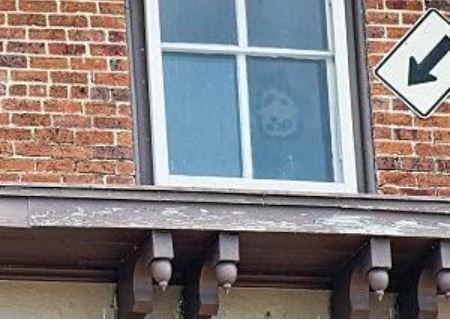HENRY WELLS
- Program
- Subject
- Location
- Lat/Long
- Grant Recipient
-
Legends & Lore®
-
Legend, People
- 56 Tuscaloosa St, Carrollton, AL 35447, USA
- 33.262239, -88.095111
-
Pickens County Alabama Commission
HENRY WELLS
Inscription
HENRY WELLSAS THE FREEDMAN WATCHED A MOB
GATHER AGAINST HIM FOR
ALLEGEDLY BURNING THE OLD
COURTHOUSE, LIGHTNING ETCHED
HIS "FACE IN THE WINDOW"
ALABAMA FOLKLIFE ASSOCIATION
WILLIAM G. POMEROY FOUNDATION 2020
“The Face in the Window” is often described as one of Alabama’s best-known legends. While multiple versions to the story exist, the common thread is that in the 1870s, a Black man named Henry Wells was accused of burning down the Pickens County Courthouse and was subsequently killed by an angry mob. However, before he died, Wells left a very visible reminder of his violent end for generations to come.
The Pickens County community had already experienced tragedy in 1865 when its original courthouse was set ablaze by Union soldiers. Following the end of the Civil War, materials and donations were difficult to come by. Despite their struggles the community rallied together to build a second courthouse. On November 16, 1876, it too burned to the ground. Blame was eventually placed on Henry Wells, a freedman emanicipated at the end of the Civil War, who lived near town.
One version of the legend goes that in January 1878, following Wells’ arrest on circumstantial evidence, an angry mob gathered outside the town’s third, newly built courthouse. Calls grew louder and louder that a lynching was in order. While the mob searched below, Wells peered through a glass pane of an attic window where he was hiding. He shouted to the mob:
I am innocent. If you kill me, I am going to haunt you for the rest of your lives!
At that exact moment, a lightning bolt struck the window, leaving an image of Wells’ face etched onto the glass. Meanwhile, the mob made its way in the courthouse and forced Wells outside where they lynched him. Multiple efforts made by the sheriff to wash away the image were unsuccessful.
While historians debate the timeline and actual events, as of 2021, the eerie image still remains on the garret window of the courthouse, a lingering reminder of what took place.


